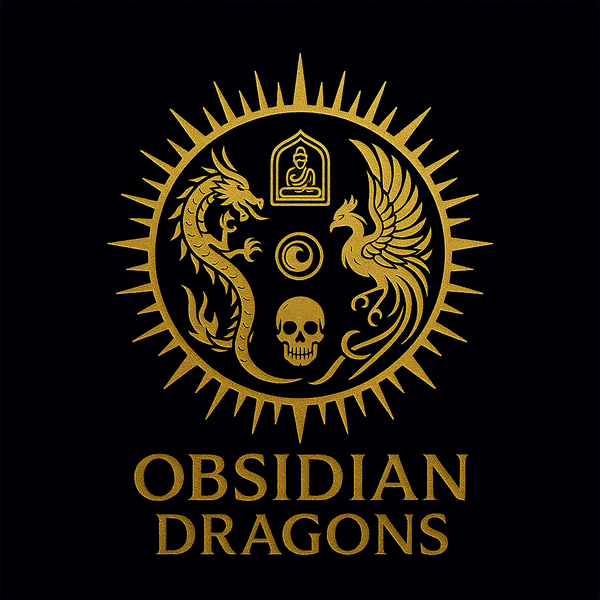obsidian dragon
Large Tibetan Vajrayana Buddhist Phurba. Bronze. ritual dagger
Large Tibetan Vajrayana Buddhist Phurba. Bronze. ritual dagger
Couldn't load pickup availability
Bronze. Ritual dagger to hunt demons.
Authentic and rare handcrafted piece.
By master bronzier, skilled craftsman in the creation of ritual objects from
vajrayana buddhism
Dimension of the phurba: Length 55cm width of 17cm Weight of 2,400KG
Large piece delivered with its base.
PHURBA
The Phurba is a dagger for defeating demons. She was introduced into the
Tibetan Buddhism by Phadmasambhava and is a symbol of transmutation of
negative forces.
Often made of stone, bone, or even iron, the Phurba daggers of the
Tibetan Buddhism temples are easily recognizable by their blade to
triple sided. Used in rituals to drive away unwanted spirits, the
Phurba works in a spiritual way to immobilize demonic spirits and
sometimes killing them in the hope that they will reincarnate in better places.
Each component of Phurba has its own meaning.
The dagger blade represents the method, with each of the three sides
representing the three-spirit worlds. The tip reconciling them all
three to form a harmonious global axis. The triple-blade design is
also intended to simultaneously transform the three poisons of the world into
positive energies.
These poisons are ignorance, greed and aggression. enemies of the
Buddhism which may require a lifetime to overcome in the quest for
enlightenment. The blade is often seen as indestructible and lit with
a fire to burn above hatred.
The handle of the Phurba represents wisdom and is often modeled like a bulb
eight-sided with symmetrical knots at each end. There are various
interpretations to the presence of these nodes. From the belief that Nirvana is
locked inside, to the belief that the different sections of the nodes
contain the paradises of several gods.
Going as far as the desire for a shapeless form, representing the fact of being
informs the realm of the Buddhas. The top of the handle often displays the
three wrathful Yamantaka deities, Amrita Kundalini, and Hayagriva.
Yamantaka, the face of white color, symbolizes the body and the destruction of
hatred. Amrita, the face colored in blue, symbolizes the spirit and destruction
of illusion. Hayagriva, the face of red color, symbol of speech and
destruction of greed.
In many illustrations, Phurba's dagger is depicted under a
simple shape, due to its small size.
However, in its three-dimensional form, this tiny blade is the most
often depicted with many Buddhist symbols and demonstrates its
concentration on the purge of evil.
Vajrakilaya or Vajrakila (tib. Do-rje Phur-ba) "the adamantine dagger", called
also Vajrakumara (tib. Dor-je gzhon-nu) "the young diamond". He is the form
extremely wrathful of Buddha Vajrasattva, the semi-wrathful form being
Vajra Vidharana (Tib. Dorje Namjom) and the wrathful form Vajrapani.
Vajrasattva is a Vajrayana Buddha.
Purifier of karma, it concentrates the energies and wisdom of the five dhyani
Buddhas of which he is sometimes described as the essence. The practice of Vajrasattva
is centered on confession and purification. One of the main deities of
ancient tantras, wrathful heruka, Vajrakilaya is the yidam deity who
embodies the enlightened activity of all Buddhas and whose practice is
famous for being the most powerful in removing obstacles, destroying
forces hostile to compassion, purifying spiritual pollution and
attain ordinary and supreme attainments promptly.
He is the deity of the magic dagger phurba, symbol of the sharp point of
motionless wisdom on the power of kindness. This archetype has a use
very specific yogic and is not simply considered a deity
external to worship or manipulate in ritual activities. Vajrakilaya is
shown in formidable union, or Yab Yum with his paredra consort Diptachakra,
together they represent the union of wisdom and method, which is the
active sympathy. His crown with 5 skulls represents the 5 addictions (or
Kesla) transformed into 5 wisdoms.
Vajrakilaya is one of the eight Kagye deities, The eight great teachings of
the Sadhana, sets of teachings or transmissions of Mahayoga entrusted to
Padmasambhava and the eight vidyadharas of India. The shape of this statue, the
more usual, is taken from the "root tantra of adamantine wrath" (rTsa- rgyud -
rdo- orje khros- not). Heruka with three heads, six arms and 4 legs, brandishing
vajras (Tib. dorje), thunderbolts pulverizing ignorance with his right hands.
A mace of flame and more occasionally a trident from his left hands.
With his 4 legs, he tramples the male and female mahadevas (aversion and
desire).
It deploys two immense adamantine wings with a sharp edge, and, carries the
macabre ornaments of mass graves. Diptachakra (tib; Khorlo Gyédepma) offers him
with the right hand a kapala (cranial cup) filled with blood and with the left a
kartika, or kartrika, small crescent-shaped ritual skinning knife
used in the. tantric ceremonies of Vajrayana Buddhism.
It is said that the kartari is "one of the attributes par excellence of the deities
wrathful tantrics". It is commonly referred to as the "Knife of the Dakinis".
Its shape is similar to that of the Inuitsulu or woman's knife, which is
used for many things, including cleaning hides.
While the kartari is normally held in the right hand of a dakini in
iconography and spiritual practice of vajrayana, it can sometimes be seen
held by esoteric male deities, such as certain forms of
Yamantaka
It is also frequently found in the iconography of spiritual practice
Tibetan Buddhist from Chöd. In the same way that the bell and the vajra are
usually paired ritual elements in spiritual practice and
the vajrayana iconography (one is held in the right hand and the other
simultaneously held in the left), the kartika usually appears as a
pair with the kapala or "skull-cup". The shape of the kartika, or trigug, with its
crescent shape and the hook at the end, is derived from the shape of a
traditional form of Indian butcher's knife.
Enthroned on a lotus and a sun cushion, Vajrakilaya sits in the middle of a
devouring inferno like that of a kalpa.
Share
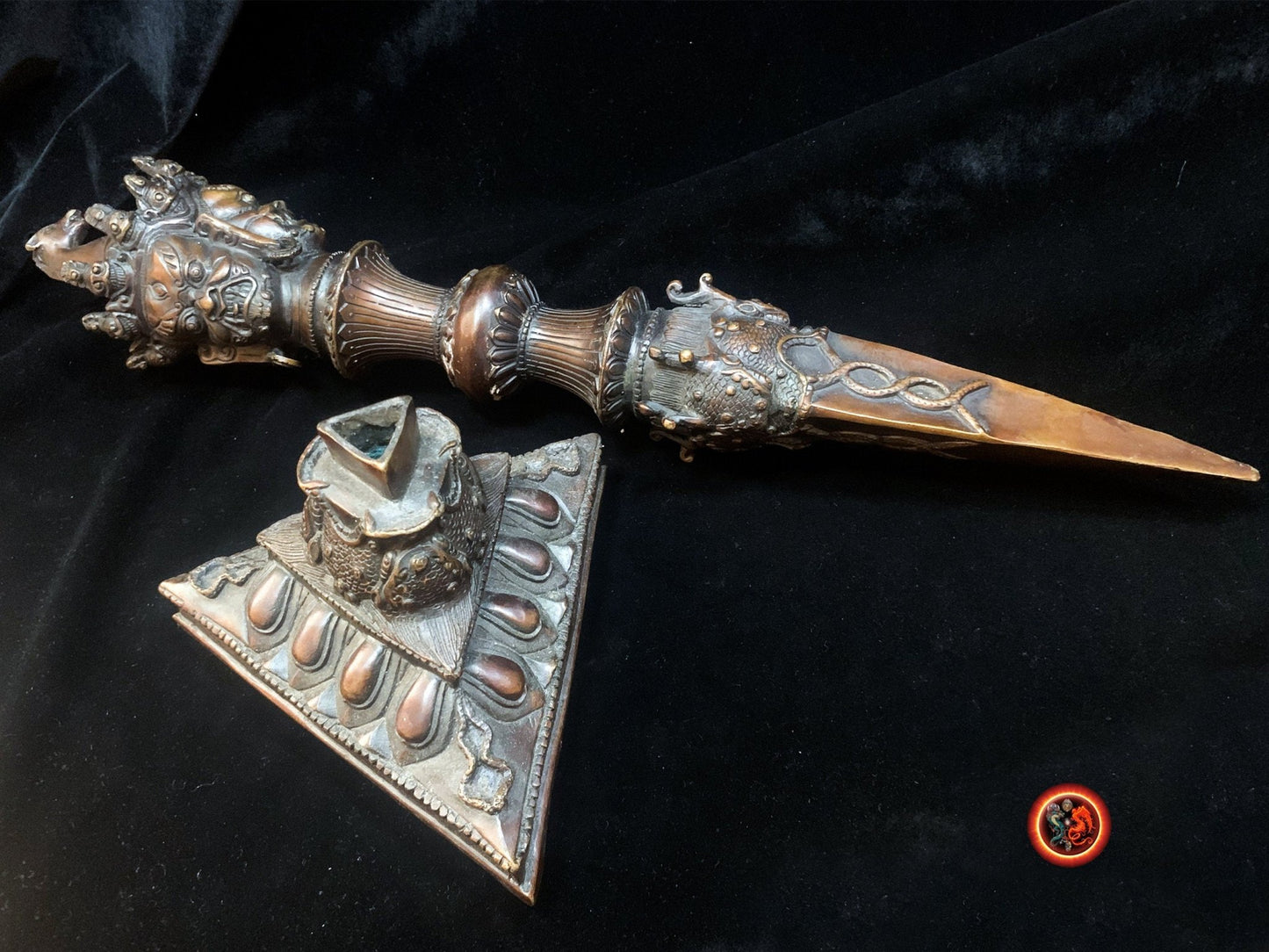
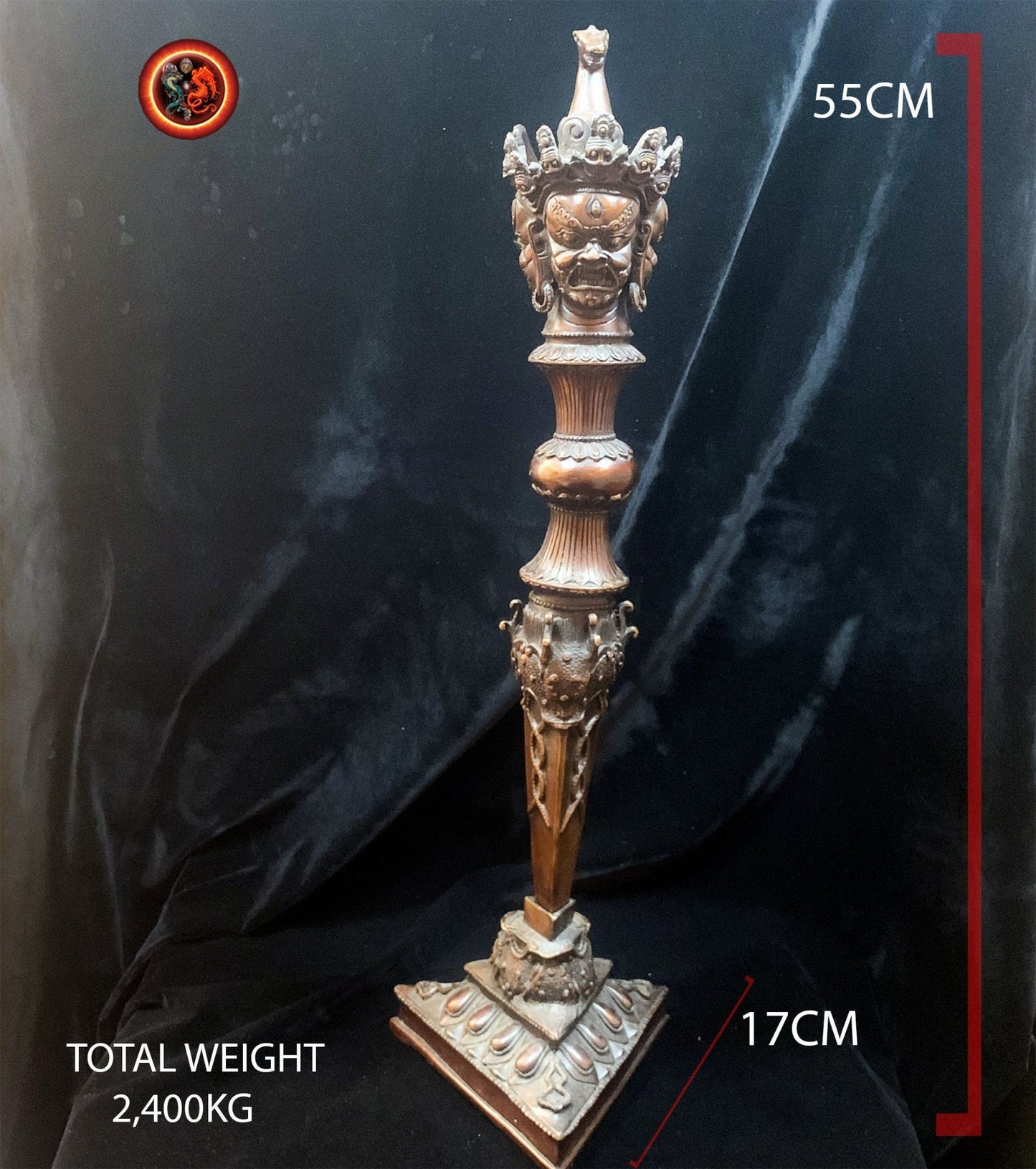

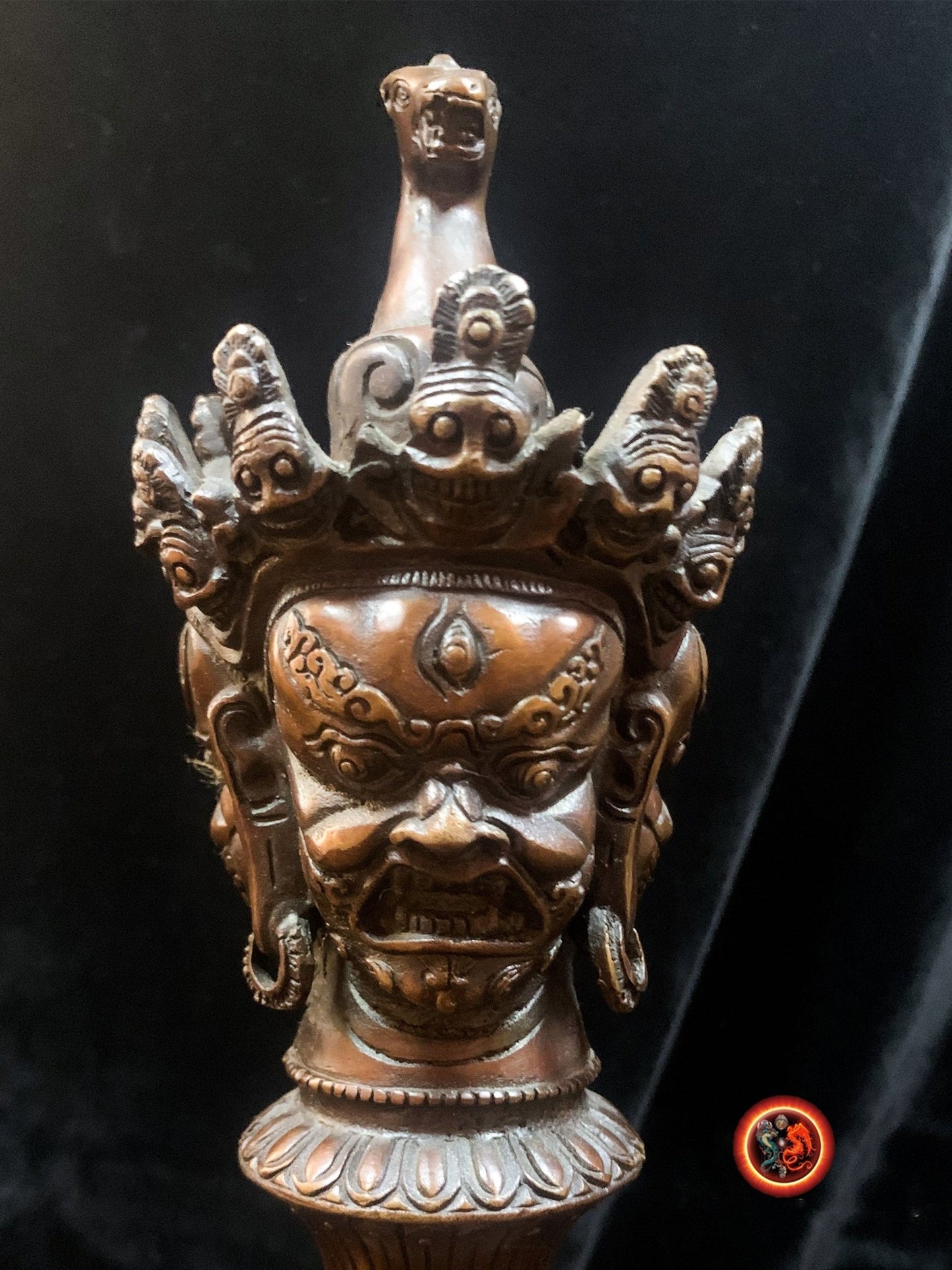
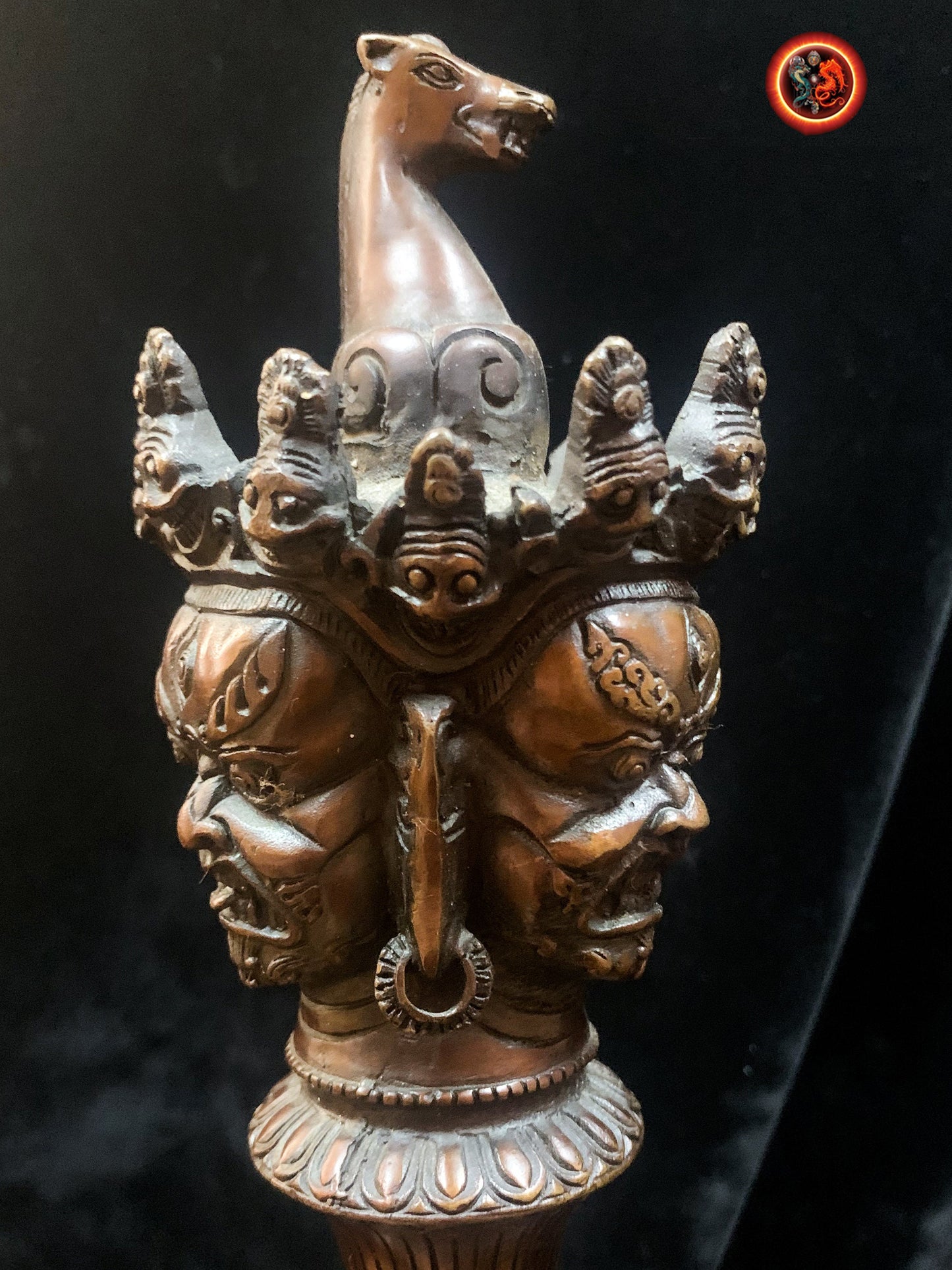
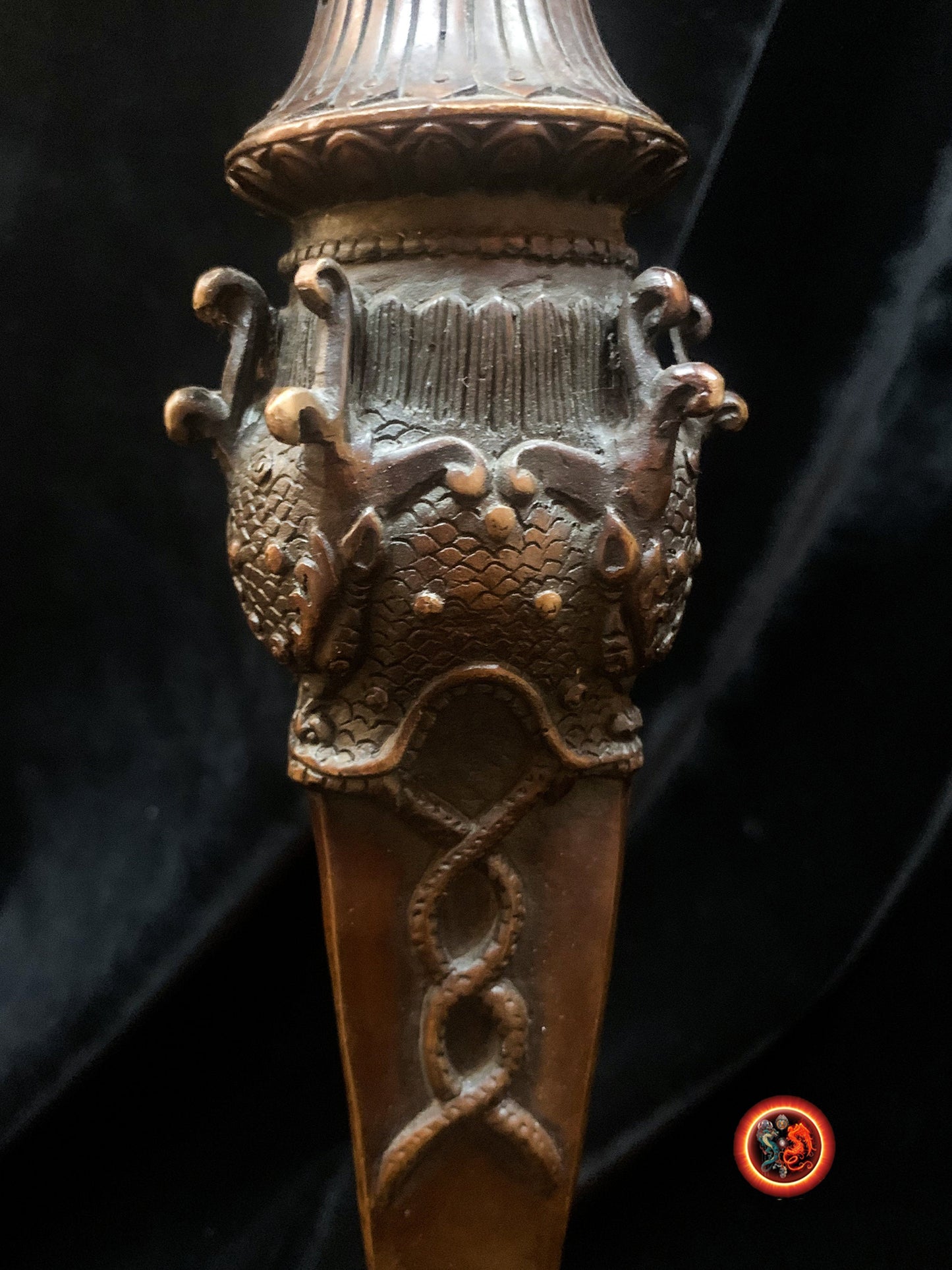
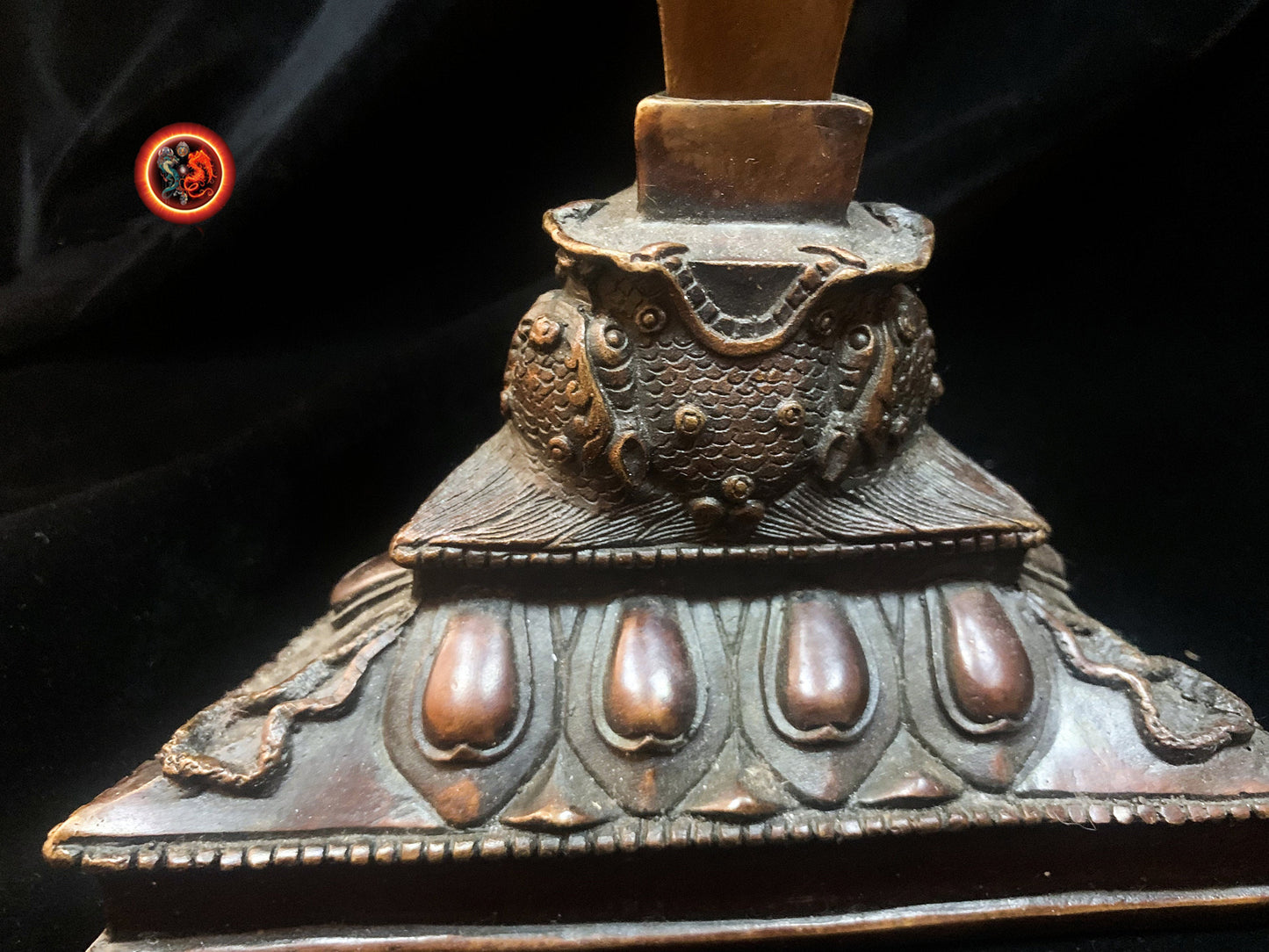
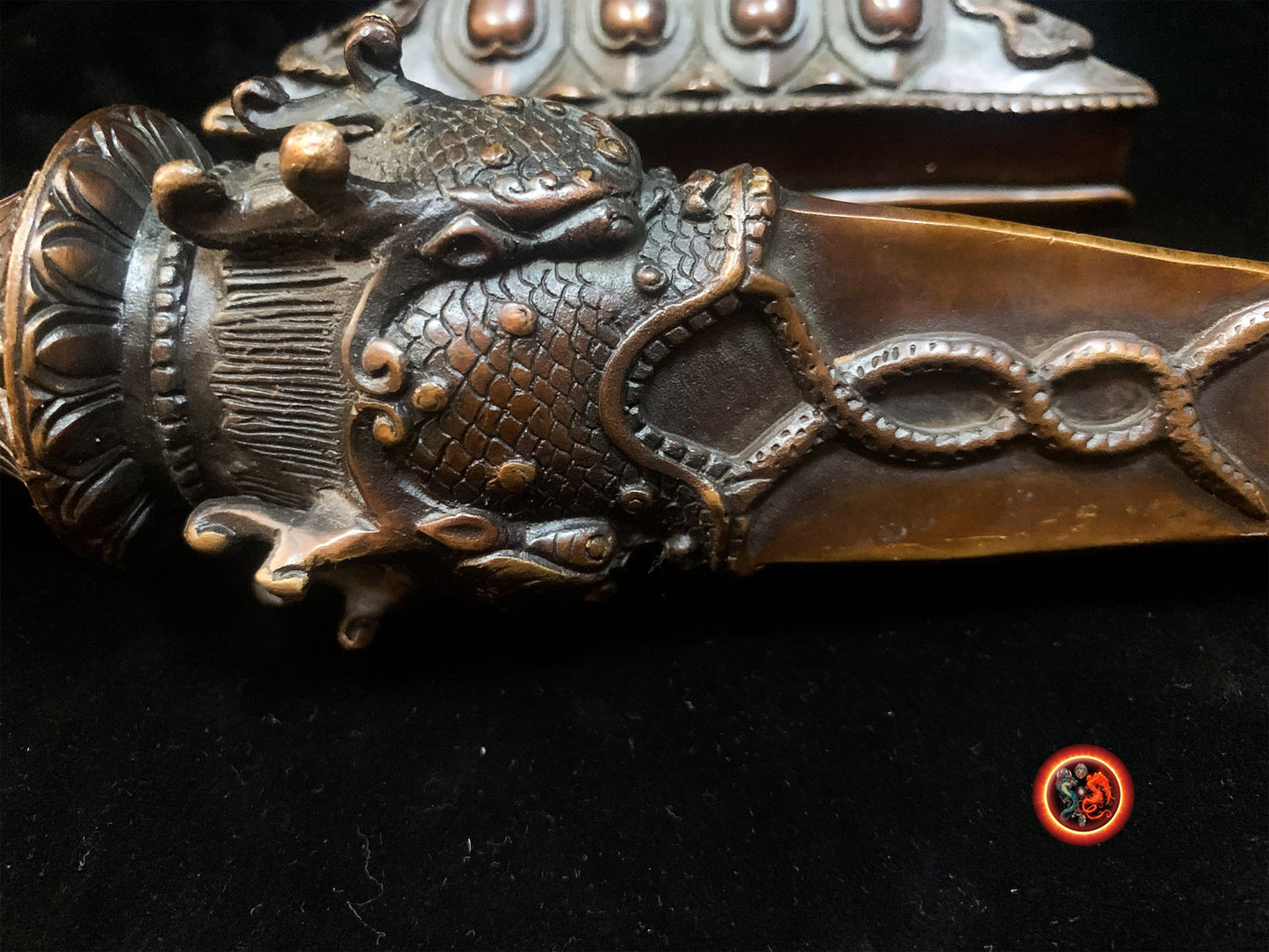
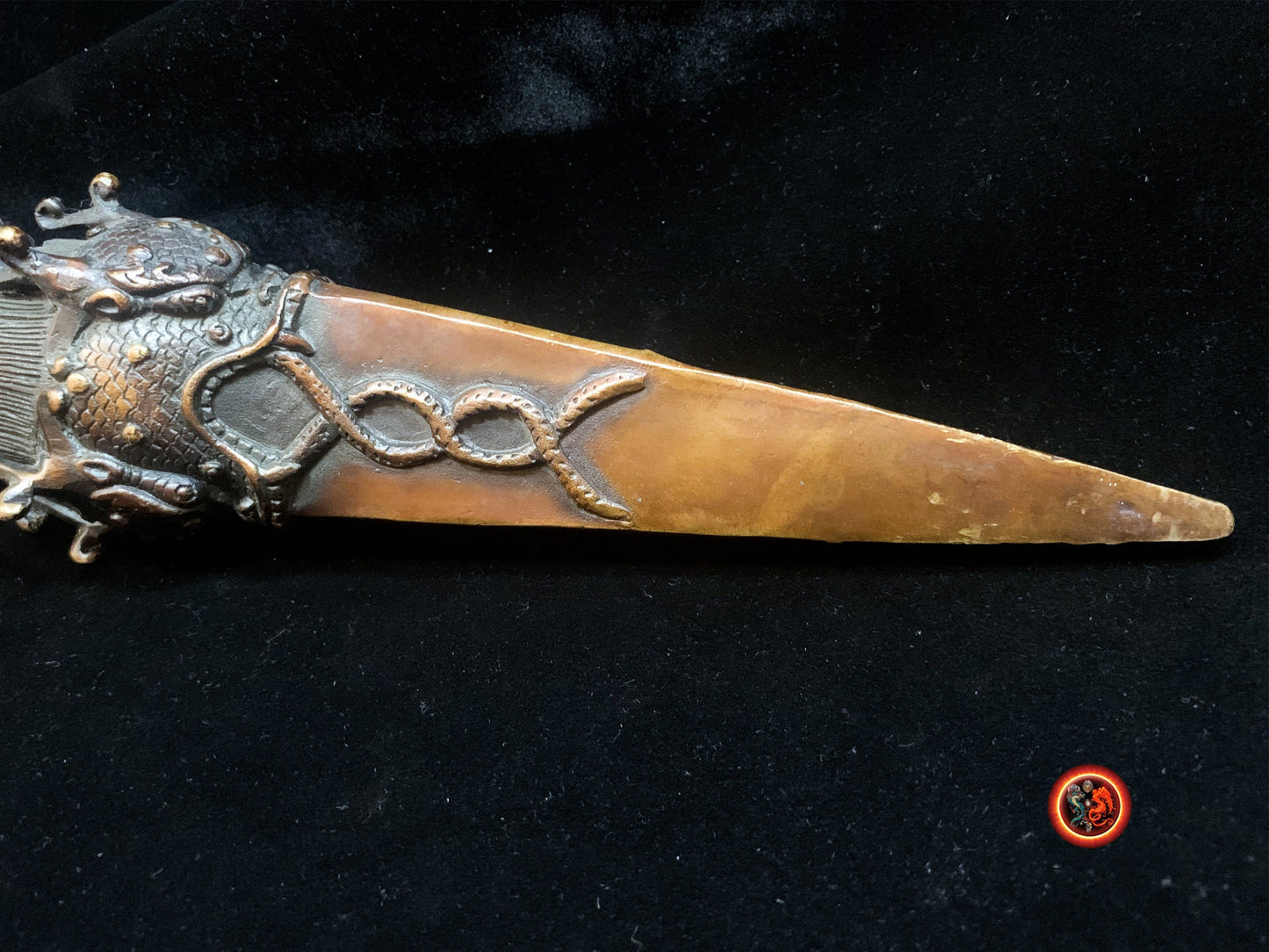
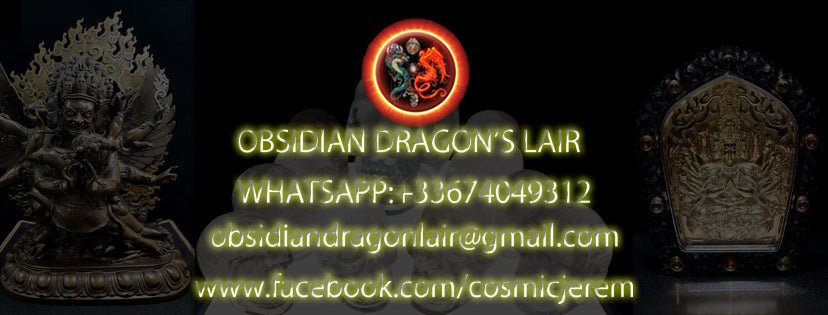

Return conditions for a Zen purchase
We offer you a money back guarantee within 14 days after delivery of your order.
If you are not completely satisfied with your purchase, please contact us to arrange a return of the product and a refund.
Except for returns, shipping is free on all orders.
Multi-column
Button text-
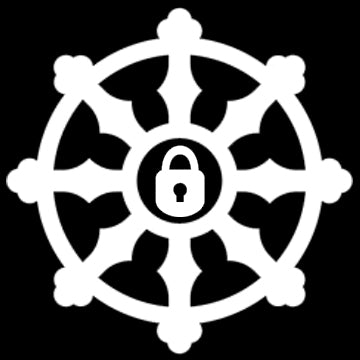
100% secure payment
3 times interest-free option with Scalapay
-
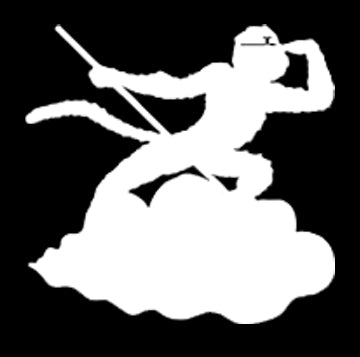
Free delivery in France and internationally
14 days money back guarantee after delivery (see our conditions of sale)
-

Column
Excellent customer service
Live chat
Whatsapp +33674049312
Let customers speak for us
from 917 reviews4eme pièce que j'achète et encore une fois, jamais déçue de l'unicité et de l'originalité. Coup de cœur pour ce bracelet en magnifiques molaires de mammouth, charge de vie et d'histoire. Attention pour un tout petit poignet de fille comme le mien cela peut être trop grand. N'hésitez pas à poser la question à Jeremy sur les tailles, il répond toujours et il est très réactif.

Déjà j’au été très impressionné par la qualité du site web pour tout chercheur de vérité mais également pour la disponibilité de Jérôme qui a su dépasser mes plus grandes attentes pour la commande sur mesure d’un mala en Obsidienne Œil Céleste – Dragon & Bagua Feng Shui. Gràce à ce puissant talisman je peux désormais continuer ma route sereinement. Un très grand merci sincèrement.

magnifique, puissant et apaisant, il m'aide à garder mon calme je le trouve absolument parfait!

J'ai eu l'occasion de rencontrer Jérémy sur Paris avant l'achat...très bon contact avec lui ..il sait de quoi il parle...je suis revenu vers lui pour l'achat de cette magnifique statue...elle a été emballee avec beaucoup de soin pour une expédition de chine... vraiment très satisfait de cet achat..merci

Pendentif dragon en obsidienne œil céleste - Symbole spirituel

Le collier est superbe, et ce pendentif magnifique, ses détails! et l'odeur du bois de santal que c'est agréable! Qualité extra! Contact excellent avec Jérémy, merci beaucoup pour votre gentillesse! Quelle qualité, vivement le mala !

L'objet est très joli et malgré que je ne sois pas un spécialiste, je trouve que le crystal est beau. Il n'est pas parfait et cela me rassure sur la qualité du produit qui est sensé être naturel donc imparfait.
Très bien emballé et en plus housse de rangement offerte.
MERCI

J’ai commandé un crâne de dragon, il est super beau et très puissant. Je l’adore 😍 Et l’envoi a été très rapide 🤗 merci 🙏🏻

bracelet puissant, je suis content de mon achat

Cet artisan est gémologue, il travaille avec des artisans qui sont des vrais artistes, je suis bluffé par la qualité des ouvrages sur l’argent et sa qualité. Quand à la qualité des pierres pas besoin d’être gémologue pour voir la qualité exceptionnelle des pierres, encore une fois le travail de sculpture est exceptionnel.
Mon mala traditionnel est une pure merveille dans la tradition originelle. Le ghau est une merveille qui me comble.
Bref que dire de plus :). Allez sur son site.
PS : vendeur qui connait son métier et les traditions bouddhistes ce qui est un plus en plus :)

Ce crâne est un Etre de Lumière. Attirant , inspirant , "parlant".
Il est un Ami qui tire mes pensées vers le Haut.
Ses énergies vibrent à des fréquences élevées. Il est puissant dans la douceur.
Un crâne de Dragon m'assite également. Merveilleux !

Très beaux bracelet et très puissants

Magnifique crâne givré de l'Himalaya.

cette chevalière est tres bien réalisé, avec beaucoup de détails, je suis heureux de l'avoir

